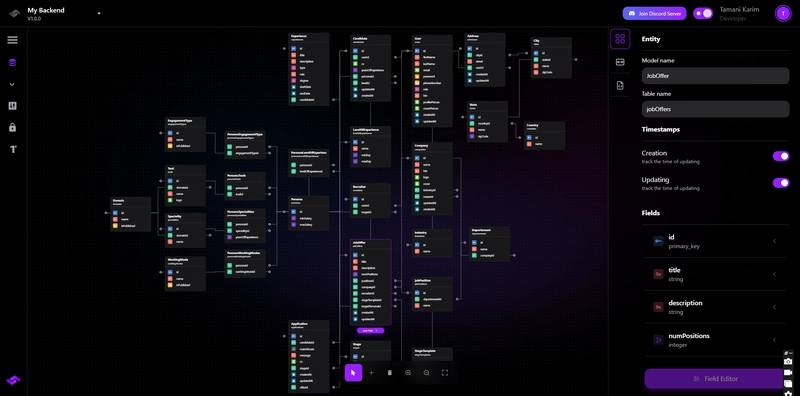Difference between calling "panic" and calling "os.Exit(1)" in Go (Golang)
In Go (Golang), both panic and os.Exit(1) are used to terminate a program, but they do so in different ways and have different implications. Here's a breakdown of the differences: 1. panic Purpose: panic is used to indicate that something unexpected or unrecoverable has happened in the program. It is typically used for errors that should not occur during normal execution. Behavior: When panic is called, the normal execution of the program is halted. The runtime starts unwinding the stack, running any deferred functions (using defer) along the way. If no recovery is attempted (using recover), the program will terminate and print a stack trace, which includes the point where the panic was called and the call stack. Use Case: panic is generally used for programmer errors or unexpected conditions (e.g., accessing a nil pointer, out-of-bounds array access, etc.). Example: func main() { defer fmt.Println("This will be printed before the program exits.") panic("Something went wrong!") } Output: This will be printed before the program exits. panic: Something went wrong! goroutine 1 [running]: main.main() /tmp/sandbox123456/main.go:7 +0x95 2. os.Exit(1) Purpose: os.Exit is used to immediately terminate the program with a specified exit code. It is typically used to indicate that the program has failed or completed its task. Behavior: When os.Exit is called, the program terminates immediately without running any deferred functions or cleaning up resources. The exit code passed to os.Exit is returned to the operating system. A non-zero exit code (like 1) typically indicates an error or failure. Use Case: os.Exit is used when you want to terminate the program immediately, without any further processing (e.g., in command-line tools when an error condition is detected). Example: func main() { defer fmt.Println("This will NOT be printed.") os.Exit(1) } Output: (No output, program exits immediately with exit code 1) Key Differences: Deferred Functions: panic runs deferred functions before terminating, while os.Exit does not. Stack Trace: panic generates a stack trace, which can be useful for debugging. os.Exit does not generate a stack trace. Exit Code: panic does not allow you to specify an exit code directly (it defaults to 2). os.Exit allows you to specify an exit code. Use Case: panic is for unexpected errors, while os.Exit is for controlled program termination. When to Use Which: Use panic when you encounter a situation that should never happen during normal execution (e.g., a bug). Use os.Exit when you want to terminate the program immediately, typically in response to a known error condition (e.g., invalid command-line arguments). Recovering from panic: You can recover from a panic using the recover function, which allows you to handle the panic gracefully and continue execution. This is not possible with os.Exit. Example of recovering from a panic: func main() { defer func() { if r := recover(); r != nil { fmt.Println("Recovered from panic:", r) } }() panic("Something went wrong!") } Output: Recovered from panic: Something went wrong!

In Go (Golang), both panic and os.Exit(1) are used to terminate a program, but they do so in different ways and have different implications.
Here's a breakdown of the differences:
1. panic
-
Purpose:
panicis used to indicate that something unexpected or unrecoverable has happened in the program. It is typically used for errors that should not occur during normal execution. -
Behavior:
- When
panicis called, the normal execution of the program is halted. - The runtime starts unwinding the stack, running any deferred functions (using
defer) along the way. - If no recovery is attempted (using
recover), the program will terminate and print a stack trace, which includes the point where thepanicwas called and the call stack.
- When
-
Use Case:
panicis generally used for programmer errors or unexpected conditions (e.g., accessing a nil pointer, out-of-bounds array access, etc.). - Example:
func main() {
defer fmt.Println("This will be printed before the program exits.")
panic("Something went wrong!")
}
Output:
This will be printed before the program exits.
panic: Something went wrong!
goroutine 1 [running]:
main.main()
/tmp/sandbox123456/main.go:7 +0x95
2. os.Exit(1)
-
Purpose:
os.Exitis used to immediately terminate the program with a specified exit code. It is typically used to indicate that the program has failed or completed its task. -
Behavior:
- When
os.Exitis called, the program terminates immediately without running any deferred functions or cleaning up resources. - The exit code passed to
os.Exitis returned to the operating system. A non-zero exit code (like1) typically indicates an error or failure.
- When
-
Use Case:
os.Exitis used when you want to terminate the program immediately, without any further processing (e.g., in command-line tools when an error condition is detected). - Example:
func main() {
defer fmt.Println("This will NOT be printed.")
os.Exit(1)
}
Output:
(No output, program exits immediately with exit code 1)
Key Differences:
-
Deferred Functions:
panicruns deferred functions before terminating, whileos.Exitdoes not. -
Stack Trace:
panicgenerates a stack trace, which can be useful for debugging.os.Exitdoes not generate a stack trace. -
Exit Code:
panicdoes not allow you to specify an exit code directly (it defaults to2).os.Exitallows you to specify an exit code. -
Use Case:
panicis for unexpected errors, whileos.Exitis for controlled program termination.
When to Use Which:
- Use
panicwhen you encounter a situation that should never happen during normal execution (e.g., a bug). - Use
os.Exitwhen you want to terminate the program immediately, typically in response to a known error condition (e.g., invalid command-line arguments).
Recovering from panic:
You can recover from a panic using the recover function, which allows you to handle the panic gracefully and continue execution. This is not possible with os.Exit.
Example of recovering from a panic:
func main() {
defer func() {
if r := recover(); r != nil {
fmt.Println("Recovered from panic:", r)
}
}()
panic("Something went wrong!")
}
Output:
Recovered from panic: Something went wrong!












































































































































































![[The AI Show Episode 142]: ChatGPT’s New Image Generator, Studio Ghibli Craze and Backlash, Gemini 2.5, OpenAI Academy, 4o Updates, Vibe Marketing & xAI Acquires X](https://www.marketingaiinstitute.com/hubfs/ep%20142%20cover.png)


























































































































![[FREE EBOOKS] The Kubernetes Bible, The Ultimate Linux Shell Scripting Guide & Four More Best Selling Titles](https://www.javacodegeeks.com/wp-content/uploads/2012/12/jcg-logo.jpg)



![From drop-out to software architect with Jason Lengstorf [Podcast #167]](https://cdn.hashnode.com/res/hashnode/image/upload/v1743796461357/f3d19cd7-e6f5-4d7c-8bfc-eb974bc8da68.png?#)







































































































.png?#)





.jpg?#)






























_Christophe_Coat_Alamy.jpg?#)







































































































![Rapidus in Talks With Apple as It Accelerates Toward 2nm Chip Production [Report]](https://www.iclarified.com/images/news/96937/96937/96937-640.jpg)









































































































































